Discover 11 hidden attractions, cool sights, and unusual things to do in Pskov (Russia). Don't miss out on these must-see attractions: Pskov Krom, Trinity Cathedral in Pskov, and Mirozhsky Monastery. Also, be sure to include Cerkov Vasilia na Gorke in your itinerary.
Below, you can find the list of the most amazing places you should visit in Pskov (Pskov).
Table of Contents
Pskov Krom

Also known as: Псковский Кром
Ancient riverside citadel with towers. The Pskov Krom, also known as the Pskov Kremlin, is an ancient citadel in Pskov, Russia. In the central part of the city, the Krom is located at the junction of the Velikaya and Pskova rivers. The citadel is of medieval origin, with the surrounding walls constructed starting in the late 15th century.
The Krom was the administrative and spiritual centre of the Pskov Republic in the 15th century.
In 2010, two of the towers of the Krom (the Vlasyevskaya, which dates to the 15th or 16th century, and the Rybnitskaya, which dates to 13th or 14th) were damaged in a fire.
It's a Russian nominated candidate site on the UNESCO World Heritage Tentative List under 'Great Pskov' nomination.[1]
Trinity Cathedral in Pskov
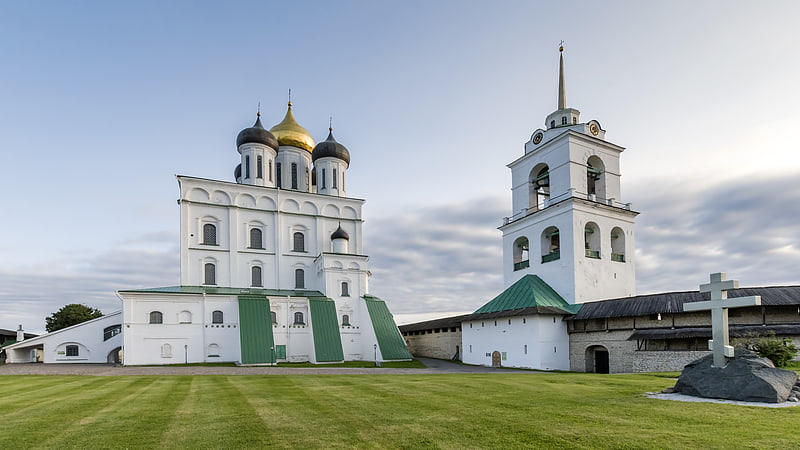
Also known as: Троицкий собор
Church in Pskov, Russia. The Trinity Cathedral is located in the Pskov Krom or Kremlin on the east bank of the Velikaya River. It has, since 1589, been the mother church of the Pskov Eparchy.
The first wooden Trinity Cathedral (the Russian term sobor, translated as "cathedral" can mean any major church irrespective of it being a cathedral church of a bishop) was built in the tenth century, allegedly under the patronage of Princess Olga, but this seems unlikely as Olga's conversion was personal, and the conversion of the Rus Land did not occur until 988, almost two decades after her death. Thus, it seems likely the first church dates to the time of Christianization or shortly thereafter. This church was replaced by a stone church in 1138, allegedly at the behest of Prince Vsevolod Mstislavich, who died the previous year. The cathedral was destroyed and rebuilt several times over the centuries; for example, the Novgorodian First Chronicle mentions that in 1365, Archbishop Aleksei of Novgorod (r. 1359-1388) blessed the reconstruction of a stone church on the foundations of the original Trinity church; it was completed in 1367 under the direction of Master Kirill (who appears to have died in the plague of 1390). This church was heavily damaged in a fire in 1609 and the interior was renovated aftwards. The current building was built beginning in 1691 and consecrated in 1699.
In the Soviet period, the cathedral was part of the schismatic Living Church movement in the 1920s before its closure in the 1930s, at which time it was turned into a museum. It was reopened as a church during the Nazi occupation. It remained open after the war.
The cathedral is 256 feet tall and contains the tombs of saint princes Vsevolod Mstislavich (also known as Gavriil - died in 1138) and Dovmont (died in 1299).
The current bishop of Pskov, as of February 1993, is Archbishop Evsevii (Nikolai Afanas'evich Savvin).[2]
Address: Kremlin, 2/1, 180000 Pskov
Mirozhsky Monastery
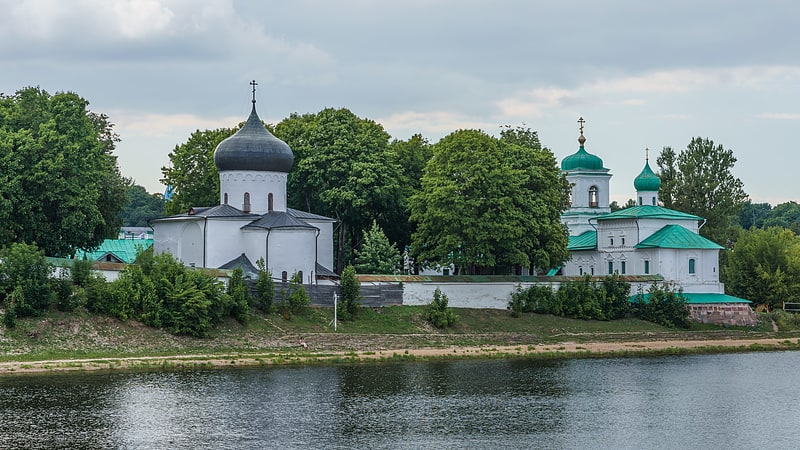
Also known as: Мирожский монастырь
Monastery in Pskov, Russia. Mirozhsky Monastery is a 12th-century Russian Orthodox monastery complex in Pskov, Russia, famous for its frescoes, located in the Christ's Transfiguration Cathedral. The name of the monastery is derived from the name of the Mirozha River, since the monastery is located at the place where the Mirozha joins the Velikaya River, on the left bank of the Velikaya. The catholicon of the monastery is one of the two pre-Mongol buildings which survived in Pskov, and contains the frescoes of the 12th century. The monastery, together with the Transfiguration Cathedral, is part of the Churches of the Pskov School of Architecture, which became an World Heritage Site in 2019.[3]
Address: Красноармейская наб., Pskov
Cerkov Vasilia na Gorke
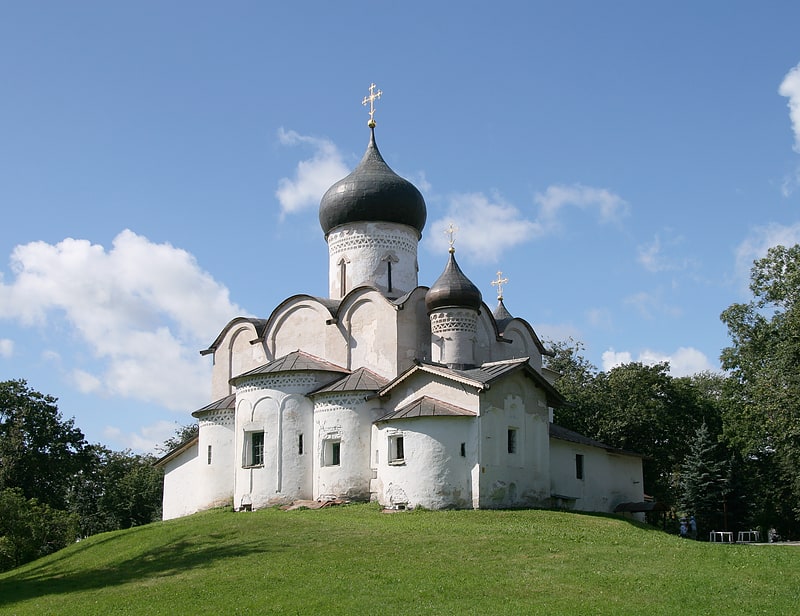
Unesco, Church
Address: 5 Октябрьский проспект, Pskov
Ivanovsky Monastery
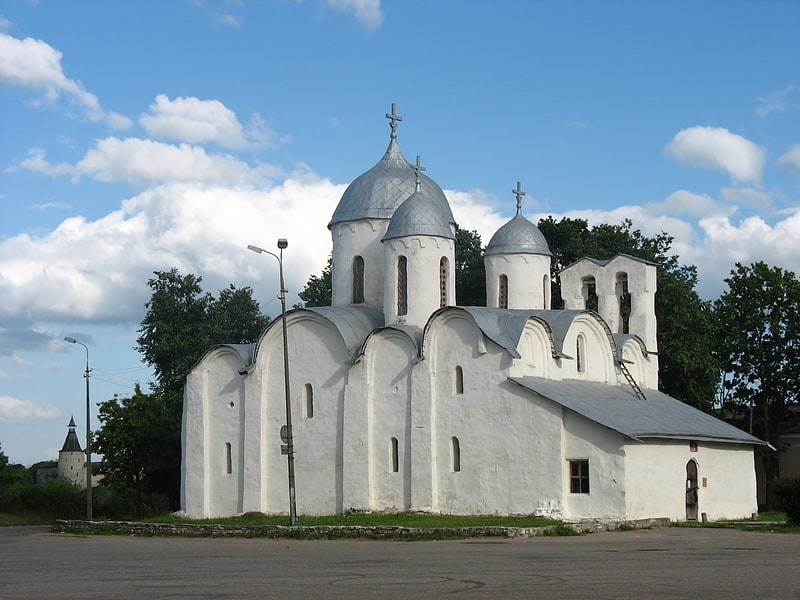
Also known as: Иоанно-Предтеченский монастырь
Monastery. The Convent of Nativity of Saint John the Baptist is a former Russian Orthodox nunnery in Pskov. It is notable for the katholikon, one of Russia's oldest churches, dating from the first half of the 12th century. The church is located at the city center, on the left bank of the Velikaya River, in the Zavelichye quarter. It currently belongs to Krypetsky Monastery. It is the second oldest building in Pskov after the katholikon of the Mirozhsky Monastery and was designated an architectural monument of federal significance. The Cathedral of Ioann Predtecha is part of the Churches of the Pskov School of Architecture, which became an World Heritage Site in 2019.[4]
Prikaznye palaty
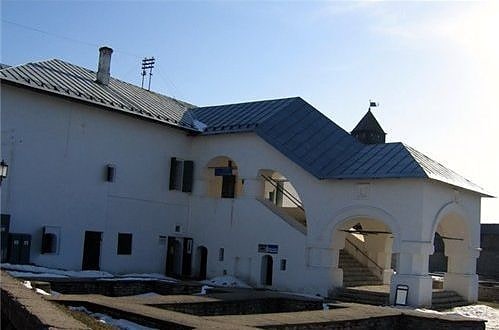
Prikaznye Chambers is a historical stone building, built in 1693. The only preserved administrative building of the XVII century in Pskov. Object of cultural heritage of federal importance. It is situated in the southern part of the town of Dovmont. Address: the Kremlin, Pskov.
Address: 4 Кремль, Pskov
Cerkov Pokrova i Rozdestva ot Proloma

Church of the Intercession and Nativity of the Mother of God from the Prolomo is an Orthodox church in Pskov. A monument of history and culture of federal significance of the XV-XVI centuries. It is located in the southern corner of Okolnoe town near the Pokrovskaya tower. The break is the place of the collapse of the fortress wall during the siege of Pskov by Stefan Bathory.
Address: 1 улица Свердлова, Pskov
Riga Bridge
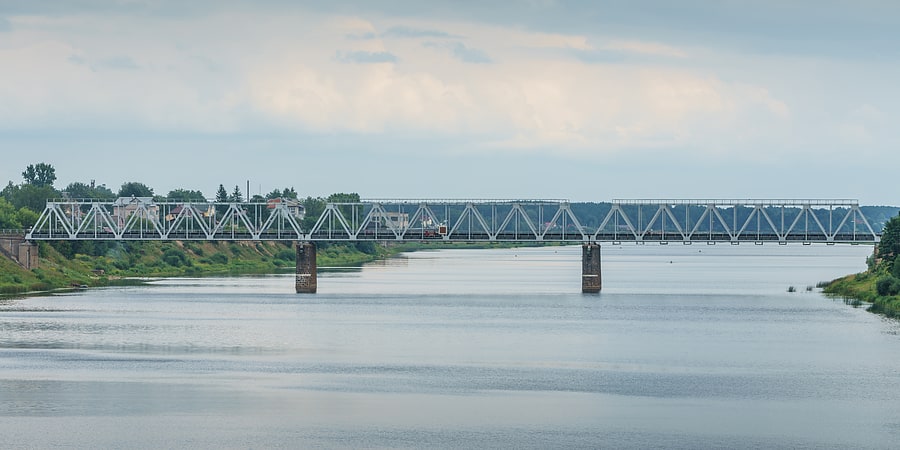
Also known as: Рижский мост
Bridge in Pskov, Russia. The Riga Bridge is a railway bridge that crosses the Velikaya River at Pskov, Russia. It forms part of the branch line from Valga to Tartu of Pskov-Riga Railway.
The bridge pillars were built in August 1886, construction of the bridge deck took place in July 1888 and the bridge was opened in May 1889.
The bridge was partially destroyed during the battle for the Liberation of Pikhva (Pskov) in May 1919 during the Russian Civil War. Estonian troops occupied the area and rebuilt the bridge in July 1919.[5]
Vlasevskaa basna

Vlasievskaya Tower - one of the preserved defensive towers of Pskov, was erected in the XV century. It has a high tent and an observation loft. It defended the line of the fortress walls at the descent to the Velikaya River.
Address: Кремль, 7, Pskov
Cerkov Bogoavlenia s Zapskova

Unesco, Church
Address: 7 улица Герцена, Pskov
Cerkov Voskresenia Hristova so Stadisa

Church
Address: 4А улица Набат, Pskov